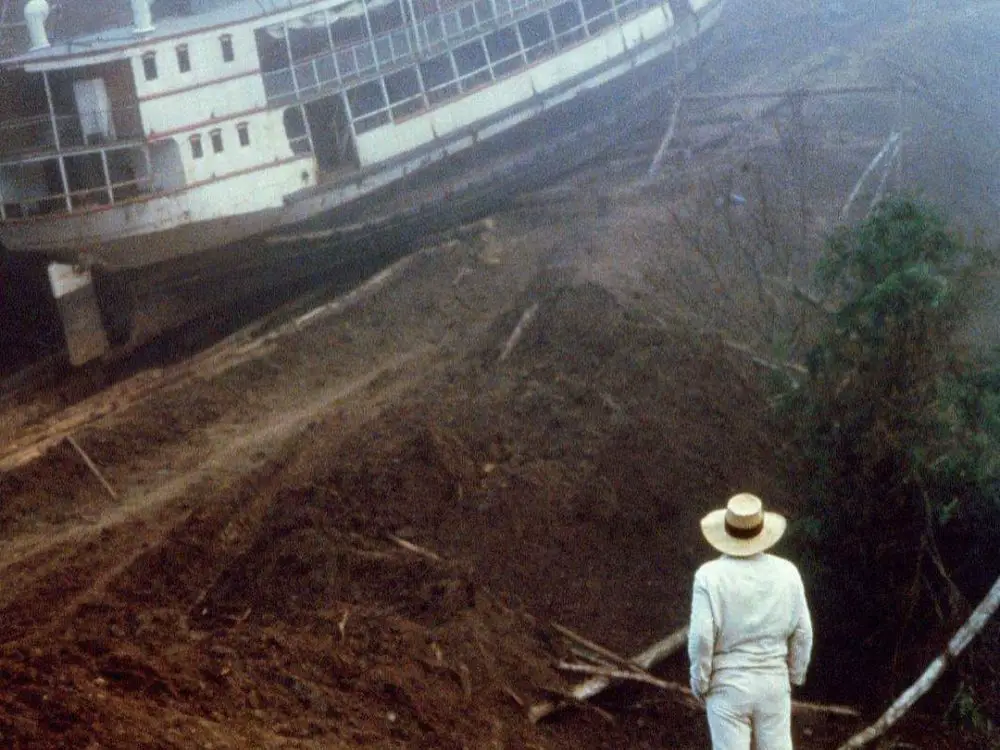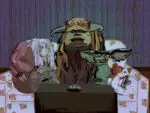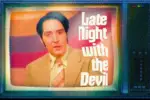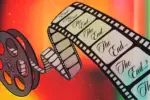It is funny to imagine people outside the artistic world they create. It makes me wonder if the art has a life of its own or if it is strictly the product of someone else’s thoughts and ideas. Good art, at least, creates conflict between the artist and the art. The art that can stand the test of time has this quality, and for me, Les Blank and his films have it.
I can tell that Blank is a man interested in the present experience. He is someone who wants to look at a different angle of day-to-day life. But I have no knowledge of him as a person. Nevertheless, when I showed my brother one of his films, he thought it was strange, but after a while, he became captivated. And this is what makes his films nostalgic and euphoric at the same time. The fact that you are watching day-to-day life in the ‘60s, for example, and knowing there are no trained actors, breaks away from the staged approach of many of the films that we are used to seeing. The actors in Blank’s films are people in their daily lives, and, for some reason that makes it seductive. It is the rawness that penetrates the viewer.
For some reason, it seems that Blank is letting the story appear as in a free form documentary, but if you pay close attention, the camera is the protagonist. It’s asking questions and narrating the story by using close-ups, extreme close-ups, high angles and low angles. It feels as if the camera is alive and a character of its own. It feels like as if a curious child grabbed a camera and started filming different things that may not seem so interesting to the average person. But when you begin to watch, the curiosity of the camera plays a big role in how hypnotic the film can be.
I think it is better to talk about Les Blank when you talk about his films. So, here are my top four films created by Blank.
1. The Burden of Dreams (1982)
This is a film about how German filmmaker Werner Herzog managed to film “Fitzcarraldo,” a film that deals with a man that dreams of opening an opera in the Amazon. It captures the struggles Herzog had to deal with during the four-year process of making the film. For example, the indigenous tribes had a civil war, so they had to move production from their original location. This is something that delayed production for six months. Also, this made them lose Mick Jagger, who was one of the leading actors.
But that was only the tip of the iceberg. The problems went on and on for four years. Herzog was living in hell and so was the rest of the crew. They were trapped in the Amazonian jungle for a long time trying to make the film while desperation and hopelessness abounded. Herzog himself said, “They say the jungle is full of erotic elements, but I only see it as fornication and asphyxiation and fighting for survival.” He saw nature as organized chaos — something that is always around us.
Nevertheless, amidst the chaos, Herzog kept his dream alive. It was a relentless and almost sociopathic mission, but the whole point of his movie was to make dreams a reality. And that was his dream — to make the film possible. He said, “I don’t want to live in a world where I cannot articulate my dreams, that is my purpose as a filmmaker.”
2. God Respects Us When We Work, But Loves Us When We Dance (1967)
It is 1967 in Los Angeles and you have a music festival with some interesting looking people. They are dressed in all kinds of crazy attire, from renaissance priests to biker gang members. The music is blasting in the background sounding like the continuous experimental rock you sometimes hear in early Pink Floyd. The camera flows through space and time around the concert and the people. It beats and moves on its own, organically.
After you sit down and look at the people completely transfixed, you become completely interested in the collective attitude of the people. Again, these were not paid actors, but actual people and it creates a disturbed picture of reality. It makes you think about how these people were portraying a certain type of image and managed to build the entire culture based off of it: colorful, psychedelic and free loving. Of course, I am talking about an aesthetic, and I think this is what Blank implied. However, the reality is something much different.
3. The Blues According to Lightnin’ Hopkins (1970)
The blues is how Hopkins deals with the thread of life. It is how people come together and sing for their losses and broken dreams, for their troubles and miseries. It is a coping mechanism and an art. Besides that, the blues are cool.
This film looks at the life of Lightnin’ Hopkins, a bluesman who lives in Texas. It shows his neighborhood and some of his musical performances. But the most important thing is that you learn about the character of Hopkins and the people. You see the drinking, prostitution, poverty and simplicity in day-to-day life that surrounds Hopkins. And you see stories of racism and how blues becomes a way to deal with it all.
The music is a big part of Blank and it shows in this film. It synchronizes with the camera movement — they both interact in conjunction and in rhythm.
4. Werner Herzog Eats his Shoe (1980)
This film depicts German director Werner Herzog fulfilling his promise of eating his own show if director Errol Morris ever completed his film “Gates of Heaven.”
This is a strange proposition and does not make any sense. But Blank makes something outrageous appealing, besides the fact that Herzog is an eccentric force of nature. For example, the film essentially captures the whole shoe cooking activity. It includes how Herzog boils his shoes with garlic and water and then adds potatoes and other spices. The whole thing is nuts, but somehow it keeps you captivated.
Just by looking at how Herzog talked and conducted himself, you can see that he was a true artist. He was true to his word. The fact that he was able to convince Errol Morris into making a film he was afraid to make, makes Herzog a true champion for his fellow artist. Besides the insanity, he can capitalize and communicate his message effectively. It somehow makes logical sense, and I think this is only able to be grasped through the metaphysical qualities Blank explores with his camera. It makes the insane humane.
Why You Should Watch Les Blank’s Films
If you are interested, I think Blank was up to something greater than entertainment. He was after a form of unity that is everywhere and ever-present. He was after the human condition and day-to-day life. He somehow knew that we are the best characters and that we tell the best stories. They say that reality is stranger than fiction and I think Blank capitalized on that.
In his films, there is a linguistic, anthropological and historical element. And if there was something that resembles this in theory it is called phenomenology. This is a philosophical subject that was introduced by Edmund Husserl in the 20th century and deals with the study of consciousness as experienced from the first-person point of view. In other words, it deals with the direct experience of and about an object. And in Blanks films, the direct experience encapsulates the human condition and makes it transcendent.
















